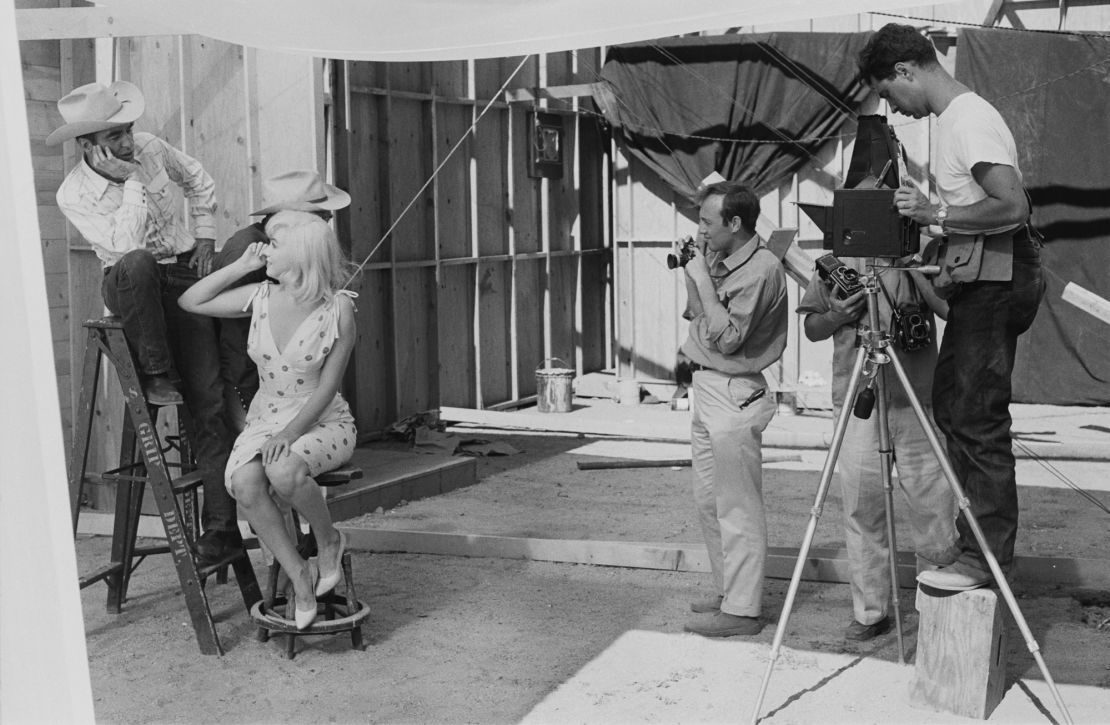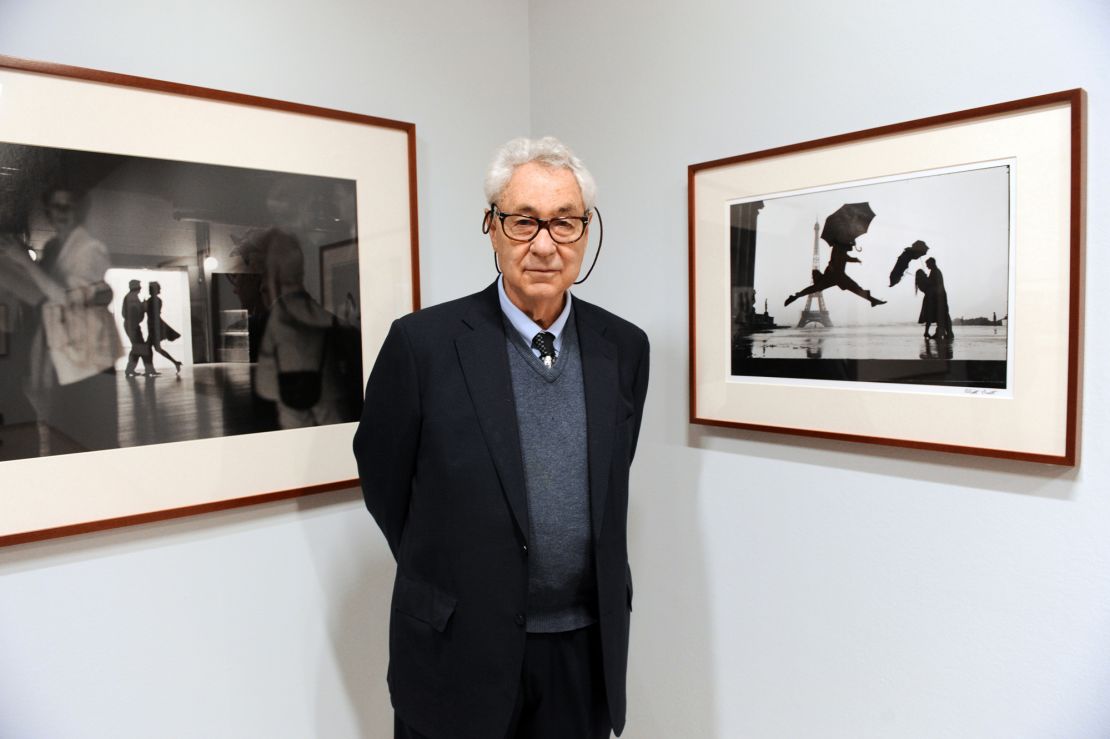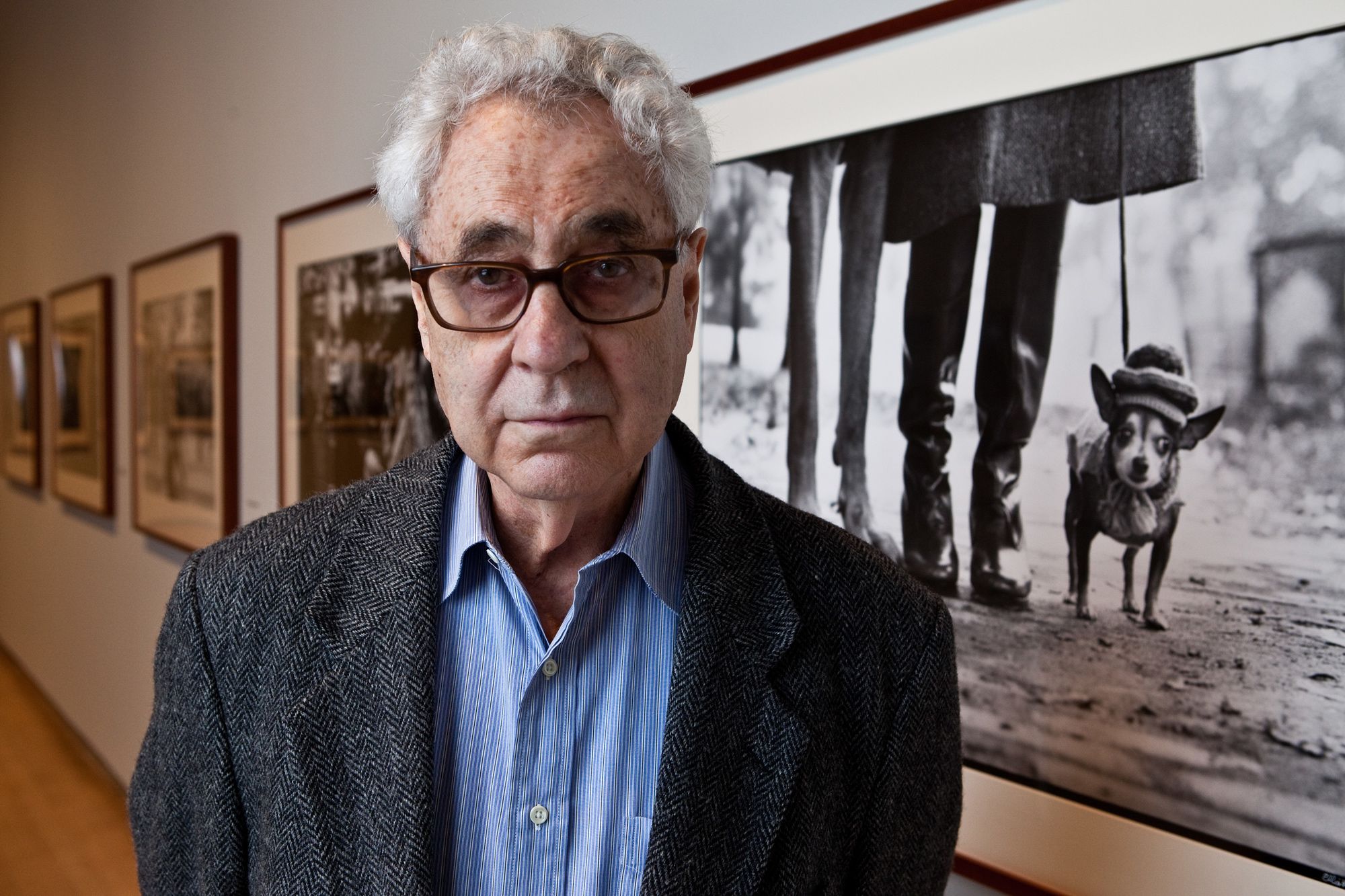Elliott Erwitt, the photojournalist and filmmaker who wryly documented the minutiae of American life for over six decades, has died at 95.
According to the caption accompanying a photo shared on his official Instagram account, Erwitt “passed away peacefully at home surrounded by family.”
Erwitt was known for taking serendipitous black-and-white images captured on city streets, as well as pictures of public figures, including former US Presidents John F. Kennedy and Richard Nixon, and celebrities Marlene Dietrich, Marilyn Monroe and Arnold Schwarzenegger.

Erwitt’s humanistic approach to reportage landed him regular work for influential US magazines as well for international publications and tourism boards. He was a longtime member of the agency Magnum Photos, as well as its president for three years in the 1960s.
“It is hard to measure the impact that Elliott Erwitt has had on Magnum and the world of photography,” the agency’s current president, Cristina de Middel, wrote in a remembrance shared Thursday. His images have helped build our general understanding of who we are as a society and as humans, and have inspired generations of photographers despite the changes in the industry and trends.”
“The combination of his casual and humoristic approach to the act of photographing, and his obsessive dedication, made him a unique artist that we have lost today with great sadness,” de Middel added.
Born Elio Romano Erwitz in Paris on July 26, 1928, Erwitt spent his early childhood in Milan. His family was of Russian-Jewish descent, and they left Europe for the US in 1939 just before World War II began. They settled in Los Angeles, where Erwitt eventually took studio photography classes at Los Angeles City College. He moved to New York City in 1948 and worked as a janitor at the New School for Social Research in exchange for enrollment into film courses there, according to Magnum Photos. In 1951, he was drafted into the US Army and took on photography duties while stationed in Europe. In Paris, he visited the Magnum Photos office and met Robert Capa, the renowned war photographer, who later invited him to join the group.
Erwitt’s first major body of work, shot when he was 22 years old, wasn’t seen in full until 2018, through the exhibition “Elliott Erwitt: Pittsburgh 1950” at the International Center of Photography in New York. Erwitt took the photographs around the city of Pittsburgh, having been assigned by Roy Stryker, the former head of the US Farm Security Administration, whose commissions to photographers like Dorothea Lange and Gordon Parks resulted in some of the century’s most famous images.
This assignment, from the Allegheny Conference on Community Development, intended to show the industrial city in a new, modern light through the eyes of a cohort of contemporary photographers. Erwitt took interest in human stories, particularly those of Pittsburgh’s children, but he and the other photographers working on the project delivered thousands of images in total, and many of Erwitt’s negatives weren’t used. They were instead kept in Stryker’s archive, unseen for decades.
On his approach to photography, Erwitt has widely been quoted as saying, “It’s about reacting to what you see, hopefully without preconception. You can find pictures anywhere. It’s simply a matter of noticing things and organizing them. You just have to care about what’s around you and have a concern with humanity and the human comedy.”

Over the course of his career, Erwitt keenly observed the closed-door events that shaped history, from the swanky fêtes of the social elite — like Truman Capote’s Black and White Ball at the Plaza Hotel in 1966 — to tense political moments on the world stage.
One of Erwitt’s most famous images, from 1959, depicts then-US Vice President Richard Nixon jabbing a finger into the chest of Soviet Premier Nikita Khrushchev while in Moscow at the opening of the American National Exhibition, a six-week diplomacy effort during the Cold War that introduced Russians to American mid-century art, design and appliances. The two leaders were engaged in an impromptu fiery argument that began over a model of an American kitchen (later dubbed the “Kitchen Debate”). Elliot was on a commercial assignment at the show, he later recounted in the book “Contact Sheet,” explaining: “I just happened to be in the right spot at the right time.”
But many of his other most-celebrated pictures are lyrical or tongue-in-cheek photos of everyday life: a silhouetted image of a man leaping with an umbrella in front of the Eiffel Tower; a woman sitting on a New York City stoop with two bulldogs, angled so that the dog in her lap appears to have human limbs.
Erwitt had a particular affinity for photographing dogs, in fact, releasing five books dedicated to the subject.
“I take a lot of pictures of dogs because I like dogs, because they don’t object to being photographed, and because they don’t ask for prints,” he once offered as an explanation.
Erwitt also made a number of documentary films, as well as 18 comedies for HBO in the 1980s and released monographs including 1965’s “Improbable Photographs” and 1989’s “Personal Exposures.” In 2015, the Harry Ransom Center in Austin, Texas, acquired his photography collection spanning 1946-2010, which totals nearly 50,000 prints. A year later, the center opened the retrospective “Around the World” based on the collection.
